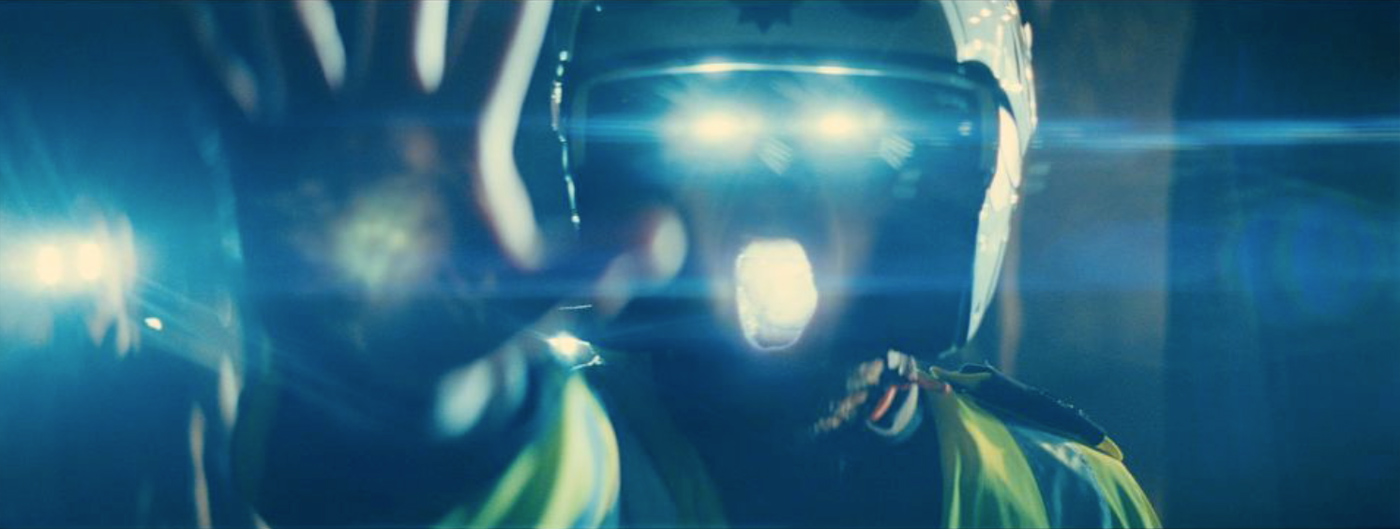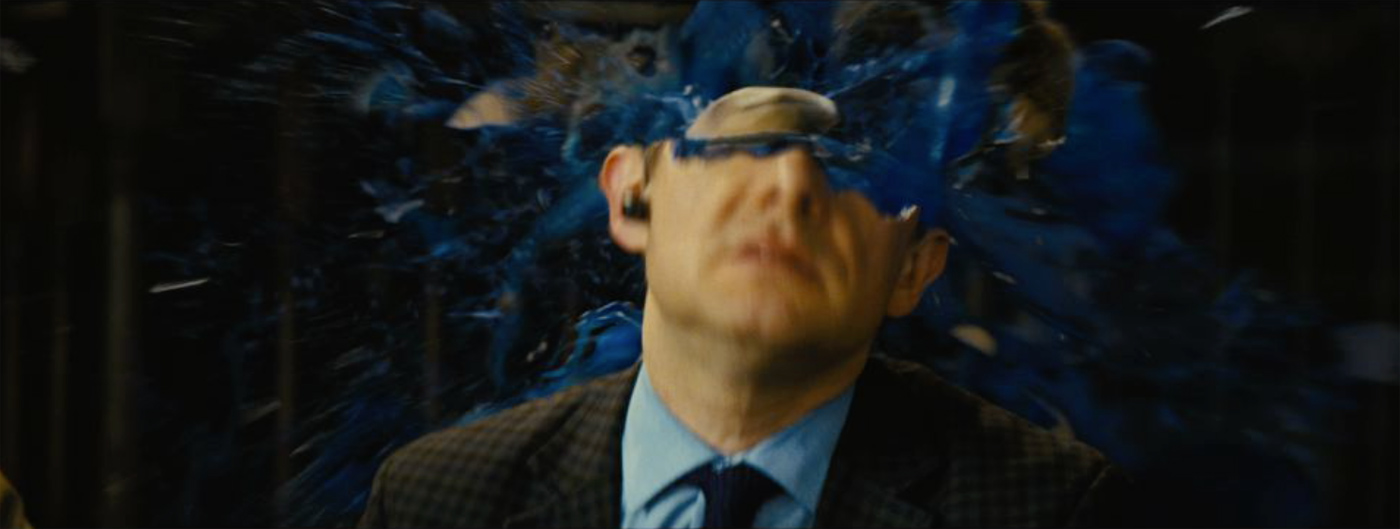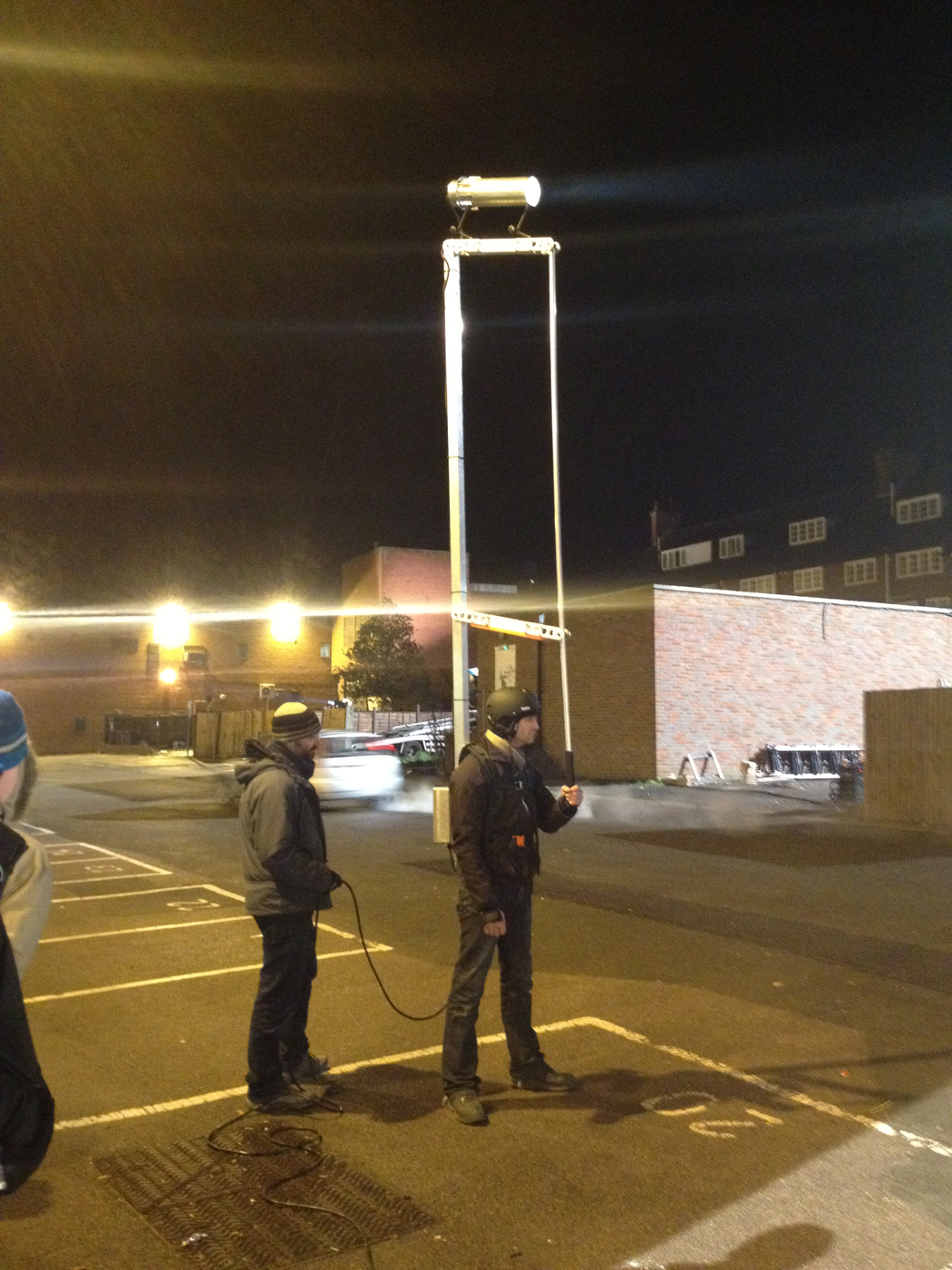In 2010, Frazer Churchill had explained to us the work of Double Negative on SCOTT PILGRIM VS. THE WORLD. He’s back on The Art of VFX at the occasion of his new collaboration with director Edgar Wright for THE WORLD’S END.
This movie is your second work with Director Edgar Wright. How was this new collaboration with him?
After working on SCOTT PILGRIM Edgar & I have a shorthand communication with each other. There’s a level of trust and understanding that makes collaboration more fluid. Edgar loved the way PILGRIM turned out and had learned a lot about the VFX process, so he was happy to let me do my thing. Less Nervous I would say. Also after PILGRIM I am completely attuned to what he wants, so that when I show him something for the first time, he nods & chuckles rather than frowns & rubs his chin. It was the same creative team essentially; Marcus Rowland, Bill Pope, Oscar Wright, Brad Allen & Paul Machliss. It’s a great team.
What were his expectations about the visual effects?
He expects that the VFX should be represented physically on the set, so If something is CG we should have something physical for the actors to play against. He obviously expects them to be of the highest quality and that they complement the style of his filmmaking. He always wants the FX to have a practical basis and likes to mix & change techniques so it’s not obvious what has been done or how we did it. He approaches it kind of like stagecraft, imagine we had a live audience watching as we shoot, make it work for them as much as possible.
Can you describe one of your day on-set and then during the post?
Shooting is always hectic & gruelling. We had a lot of work to do in a short schedule, the fight sequences were particularly intense. I’d arrive at the studio and go straight to a meeting about the days work or the next big sequence on the schedule. I’d then go to set for call time and brief My on-set Data Wrangler, the Amazing Jack Hughes on what we need to do that day. Shoot with Edgar until Lunch maybe over lunch there’d be a set to scan or photograph, Sona (VFX Producer), Graham Page (2D supervisor) & Joel Green (CG Supervisor) would usually cover that. Often on the fight days we’d shoot through lunch with a splinter unit to try and get more footage in the can. Second Unit would cross over and shoot into the night after Main unit had wrapped, I’d often stay with them in order to get our VFX elements done. Then I’d Stay in a hotel across the street from the studio & do it all again the next day. It was hectic.
Post was a little less intense. I’d do 2 x sessions of dailies with my team at DNEG everyday and Edgar would come in and review the work at the end of each week.
In the movie, the people are replaced by robots. How did you work with the art department for their aspects?
Oscar Wright the concept designer designed the robots. The key really was working with him and Waldo Mason the prosthetics designer, as the robot decapitation effects were very visceral and required a practical approach.
Waldo made us prosthetic pieces that we could shoot at the end of each set up. The idea being that if all went well we could composite the reference as an element, if that didn’t quite work out we could reproject the photography onto geometry. We also used the prosthetic pieces as look dev reference for the CG.
We used a mixture of techniques to make the decapitations work, we had amputee performers wearing detachable magnetic prosthetics
Are the blue lights on eyes and mouth a mix of pratical lights and CG or is it full CG lights?
The Aliens or “Blanks” as they are known in the film have glowing eyes and mouths. Matt Denton made LED goggles and LEDs mounted in mouth guards in order to create this, we digitally erased the goggle/mouth guard mounts. If a character was very close to camera we’d eschew the goggles and digitally composite the glow and flare elements into the eyes & mouths.
Can you tell us more about the damaged heads creation?
The VFX in THE WORLD’S END were accomplished using a mix of physical, prosthetic & digital techniques. The use of CG objects is minimal. We instead opted largely for digitally re-projecting elements photographed in-situ. This approach to VFX design was informed partly by budget restrictions but more importantly by the aesthetic demands of the film. The physical brutality of heads and arms being ripped off required a tactile physical approach.
So the need for prosthetics and splatter was evident, but it wasn’t enough to just use physical effects. They were generally used as base for further digital enhancement. Heads popping off were created by firing a prosthetic head with an air-mortar. The smashing head effect was realised by chilling wax heads filled with blue liquid and smashing them with an iron bar against green screen. These elements were then composited into the hero shot.
Arm decapitations were done with amputee performers wearing easily detachable magnetic limbs. Great care was taken to shoot the elements in the same sets & lighting set ups as the action so they could be seamlessly composited. VFX dept were supplied with prosthetics reference pieces of the neck plugs & broken head pieces so that we were able to shoot perfect lighting reference passes after every setup. In some cases the lighting reference could be composited as an element, in some other cases the references could be re-mapped or re-projected. In other instances it served purely as look development & lighting reference for a CG object. Specifically Martin Freemans broken head.
Martins head was cast in order to make a prosthetic broken head. Martins head was also digitally scanned in order to make the digital version of the head. There was a puppet Martin head and also an Animatronic Martin head. This enabled us to shoot “overs” and reverses of Martin’s broken headed character even when he was delivering dialogue, without having the expense of using CG for every shot. It is also precisely this mixing and matching of techniques that enabled us to create an effect that kept people guessing as to how it was done. It looks physical but it doesn’t seem possible that it could be.
How did you handle the matchmove challenges with the heads replacement?
Martin’s broken head had two different configurations, his head gets smashed twice in the movie, once at the start & once at the end. Oscar designed the broken head pieces, Waldo then made a cast of Martin’s head and made the two broken head prosthetic pieces. We made a plastic stencil cut to match the jagged shapes in order that we could put tracking dots on Martins face in correct configuration.
As well as scanning Martins head we also scanned the prosthetic broken head pieces to help with modelling.
Whenever we did a shot with Martin, we’d hold up a broken head reference piece so that we had perfect lighting & lookdev reference.
Can you tell us more about the big robot creation?
The 15ft high Robot is CG. The statue has a powerful searchlight in it’s head. The challenge here was to shoot a mobile powerful multidirectional Lightbeam at 15ft. Matt Denton the Animatronics designer devised a rig that enabled a performer to puppeteer a light at 15ft. The actors were able to perform against the statue stand-in and we had the searchlight in-camera.
The heroes are confronted to a big talking light. Can you explain about its design?
The design of the light is echoed throughout the film, we see the five bars on the recycling logo’s throughout the town, The statue’s face, the Brewery logo’s on the beermats & beer pumps. If you look carefully you’ll see it everywhere. It represents « The Network » Which is the alien intelligence taking over Newton Haven & ultimately The Earth.
The way it’s written in the script it’s a light that gives an Alien Powerpoint Presentation. So we took our cues from modern User Interfaces, The light is surrounded by the « dock » which contains the graphical elements it uses to tell it’s story. When the light is talking to them it’s kind of patronizing and showing off, a bit like an early adopter with a new tablet. The Light and the Dock &The Animation sequences were created in Nuke, Some specific animation was supplied by Oscar Wright. Graham Page, Luke Letkey & Tom Luff were responsible for creating this Sequence.
The real challenge came in post when we had to work really hard to make the sequence work and give the light a real character.
What indications and references did you received from the director?
We had Bill Nighys’ voice record to work from and this was our starting point. We knew the light was going to have changing emotions: triumphant, conciliatory, angry, listening/processing information, we knew the basic 5 bar design and we knew that it was going to give a showy presentation that occupied to the whole chamber. The sequence took a lot of time to develop, as we were crafting a performance, it was a difficult scene to get right, getting five bars of light to emote wasn’t easy.
How did you manage the animation?
The animation was driven by the voice record, we had the waveforms of the Bills Voice which enabled us to set up a basic procedural animation, this was tweaked to really bring it to life and hit the right beats.
What was interesting about this process as well as some other VFX processes in the film was that it was entirely set up in nuke. In years gone by we would have had 3 people involved in creating each of these shots, whereas one compositing artist was able to manage the whole thing; animation, lighting, rendering, compositing, which made the many changes necessary to craft the sequence much much faster. It was a streamlined process.
Can you tell us more about the light interaction?
As I mentioned before, we had Bills Nighy’s voice record when we were shooting, this was used to drive an LED light board to create a huge interactive glow that pulsated in time with the Voice, lighting the set & the performers.
The discussion ends with a massive explosion. Can you explain step by step its creation?
The initial explosion at the pub was created on location using a lot of pyro charges set up by Chris Reynolds the SFX Supervisor, this was complemented by a large array of Orange & Red Gelled lights placed in and around the pub by Bill Pope and John Colley the Gaffer, we added the expanding FX plasma wave to create the final effect. The FX were designed by Mick Harper and overseen by CG Supervisor Joel Green.
The huge explosion at the end of the movie creates a “plasma wave” that radiates out and destroys everything. Our heroes outrun the explosion in their car. We created a Plasma truck, powerful orange lights mounted on a truck that illuminated the moving car & it’s environment, this replicated the light thrown from the plasma wave. The hedgerows ignite as the car drives along them. We built 100ft of chicken wire “hedge” with gas bottles feeding it, this enabled us to created a tunnel of flame for the car to drive along, giving us the realism of a car in a burning hedgerow, we shot plates of hedges and mixed the techniques of comping hedges into the burning tunnel and flames into the hedgerow plates. The leading edge of the burning effect was created by shooting burning wire wool.
The final sequence present some apocalyptic views. How did you created the London shot especially?
I knew that Edgar wanted a shot of a destroyed post Apocalyptic London, he left it up to me to work out what that should be. One of our locations was Andy Knightly’s Office, which was shot at the Blue Fin building, a very modern office development in the centre of London, it has great views of major landmarks. I thought that while we were shooting there I’d go along and shoot panoramic stills of the skyline.
Edgar liked the shots, so the best of these panoramas became the basis for a « destroyed London » matte painting created by Nathan Hughes with Trevor young on Apocalyptic compositing duties.
How did you split the work amongst London and Singapour offices?
Singapore did most of the eyeglow shots. Their VFX team was led by Steven Muangman, they quickly developed a responsive workflow.
What was the biggest challenge and how did you achieve it?
Getting the balance of prosthetic & digital right was a huge challenge, and getting everyone to agree to the methodology of shooting lots of references & elements in-situ for re-projection rather than using CG. It basically meant spending more time shooting to save time & manpower in post-production.
The other challenge involved in this was in successfully setting up a nuke based reprojection methodology in order to reduce reliance on CG and minimize crew needed. This was all driven by budgetary considerations. Graham Page was instrumental in doing this.
Was there a shot or a sequence that prevented you from sleep?
The encounter with the light was difficult to pull off, crafting the performance over a period of months was challenging.
What is your best memory of this experience?
Seeing the work come together is always a great feeling.
How long have you worked on this film?
From first talks to delivery was around 2 years.
How many shots were made by Double Negative?
380.
What is your next project?
I’m not sure at the moment.
A big thanks for your time.
// WANT TO KNOW MORE?
– Double Negative: Official website of Double Negative.
© Vincent Frei – The Art of VFX – 2013





















